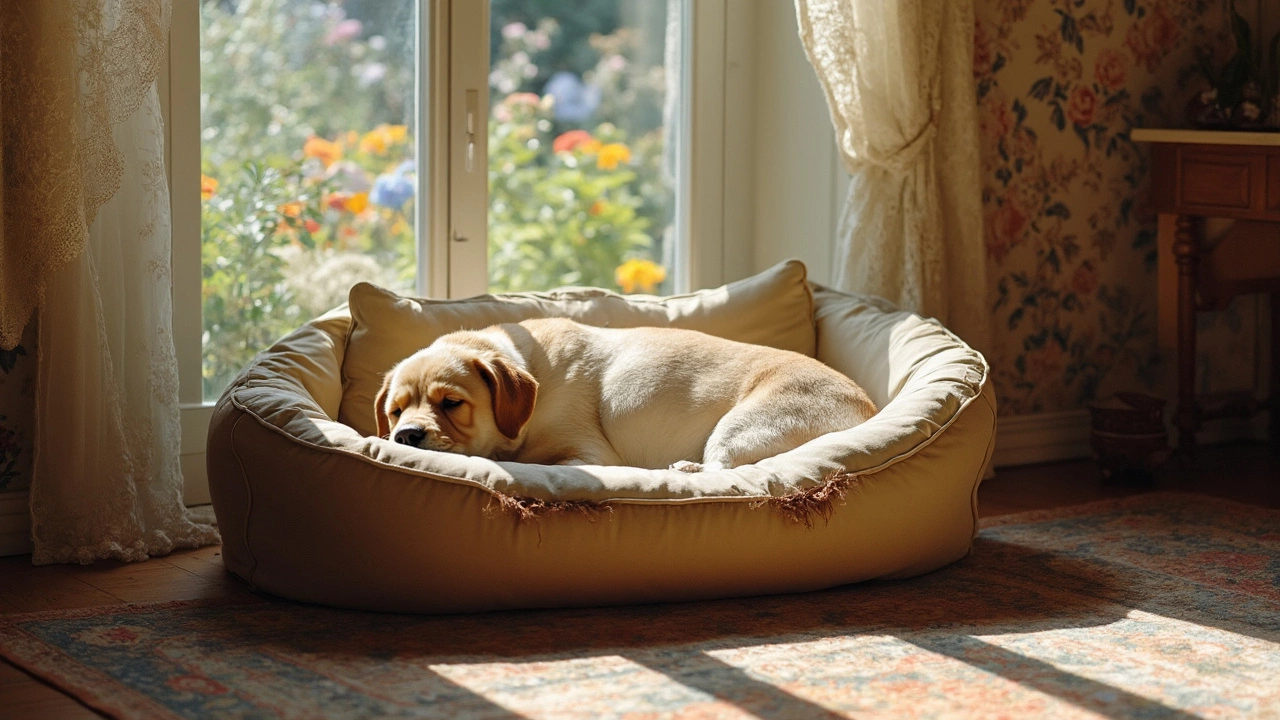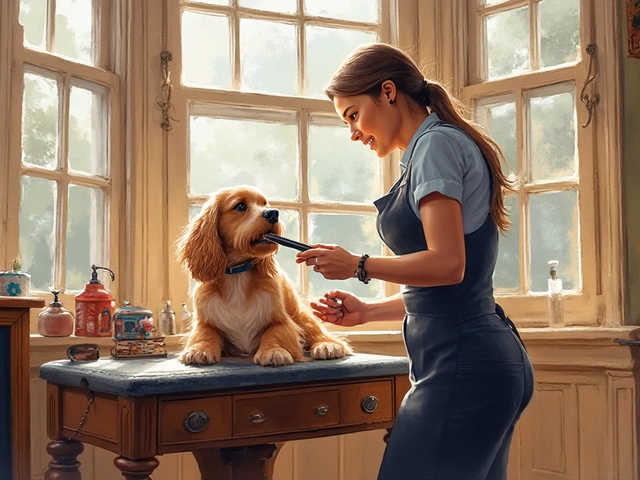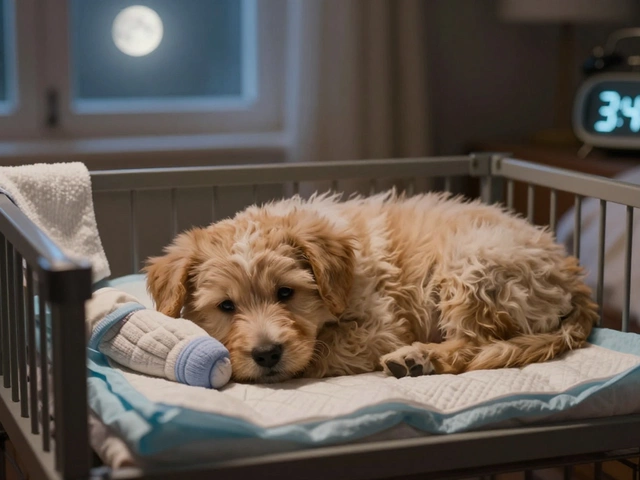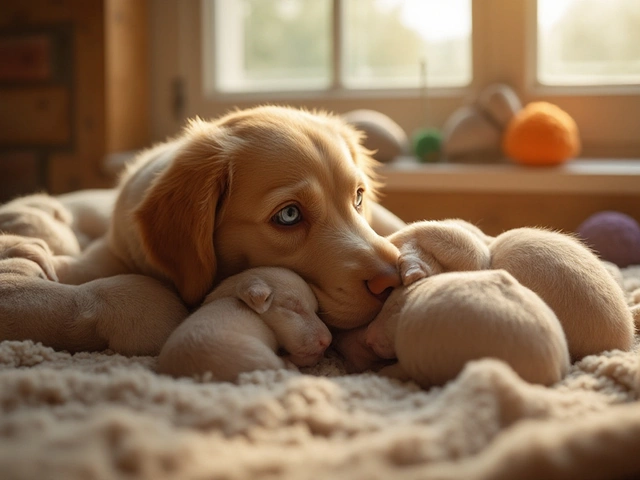Ever looked at your dog's bed and thought, 'Is it time for a new one?' It's a question every pet owner faces at some point. Often, the decision isn't as straightforward as it seems. Sure, visible rips and bunched-up stuffing are glaring clues, but there are more subtle signs to watch out for.
A bed that looks okay on the outside might be a haven for dust mites and allergens on the inside. Not to mention, as the bed ages, it could lose its support, leading to discomfort for your furry friend—and no one wants that!
Besides, let's talk hygiene. Beds can harbor bacteria and odors over time, especially if your pooch loves rolling in the dirt or drools a lot. These elements not only make the bed unpleasant but could also pose health risks.
Understanding when to throw out a dog bed isn't just about aesthetics. It's about ensuring your pup gets a comfy, hygienic spot to snooze, rest, and dream of chasing squirrels.
- Telltale Signs It's Time to Replace
- Health Implications
- The Role of Odor
- Environmental Considerations
- Choosing the Right Replacement
Telltale Signs It's Time to Replace
So, you're puzzled trying to figure out if your dog's bed needs a retirement plan? Let's break it down for you. There are some clear indicators that can guide you when deciding to part ways with your pet's cushy corner.
Visible Damage
The most obvious sign is noticeable wear and tear. Look out for rips, tears, or unraveling seams. If you see stuffing peeking out, it’s definitely time for a change. Not only do these holes make the bed look shabby, but they can also become hazardous if Fido decides to nibble on them.
Lost Shape or Support
Like our favorite pair of sneakers, dog beds lose their shape over time. If the once-plush bed seems flat as a pancake or isn't as bouncy, it’s no longer providing the support your pet needs. This can lead to joint pain, especially in older dogs or those with arthritis.
Odor and Stains
Does the bed emit an odor, even if you've washed it a million times? That's a major red flag. Persistent smells suggest the accumulation of bacteria and could mean it’s beyond cleanable. Be on the lookout for stains that refuse to budge, which can also indicate a deeper problem.
Allergies Flaring Up
Sneezing dog? Allergies can develop if dust mites are harboring in the bed. If you notice your pup reacting more than usual, and other reasons aren’t presenting themselves, consider the bed as a potential culprit.
Frequent Accidents
If your dog has urinary issues and often has accidents, it’s key to monitor the bed. Even waterproof beds have a lifespan. Once their defenses are compromised, they can become smelly and unhygienic in no time.
For those analytical types out there, here's a quick snapshot of dog bed replacement frequency:
| Frequency of Use | Recommended Replacement |
|---|---|
| Daily Use | Every 1-2 years |
| Occasional Use | Every 2-3 years |
Keeping an eye on these dog bed signals ensures your furry buddy gets the comfort they need and deserves!
Health Implications
When it comes to your dog’s wellness, dog health relies a lot on their sleeping environment. A bed that’s seen better days can be more than just an eyesore; it might actually be harmful. Think about it: dirty or worn-out dog beds might contain allergens or even pests that can trigger health issues for your pooch.
Old fibers and stuffing can break down over time, becoming a breeding ground for dust mites, mold, and bacteria. For dogs with allergies or respiratory issues, this is a world of trouble. Itching, sneezing, or even more serious conditions like skin infections could be the result of sleeping on a neglected bed.
Why Old Beds Are Bad News
Beyond allergens, a sagging bed means poor support. Just like us, dogs need proper joint and muscle support, especially older pups or those with arthritis. A lack of cushioning can lead to discomfort, making your dog avoid what should be a cozy spot.
Another overlooked concern is if the bed is damp or has absorbed pet accidents. This moist environment can cultivate bacteria, leading to unpleasant smells and potential skin irritations or infections for your pet.
Real World Impacts
Studies show dogs spend roughly 12-14 hours a day in their beds. That’s a significant amount of time that emphasizes the need for a fresh, clean, and supportive resting place. It's why pet owners must regularly check and maintain their pet's bedding.
- Check for odors regularly—if it smells, it might be time for a wash or a toss.
- Inspect the fabric and filling—loose threads or stuffing can be a hazard if ingested.
- Ensure it's providing enough cushioning—observe if your dog hesitates or seems uncomfortable while lying down.
Don’t wait for visible signs before considering a replacement. Be proactive. Your furry friend deserves a clean, comfy spot to recharge, ensuring they stay happy and healthy for the long run.
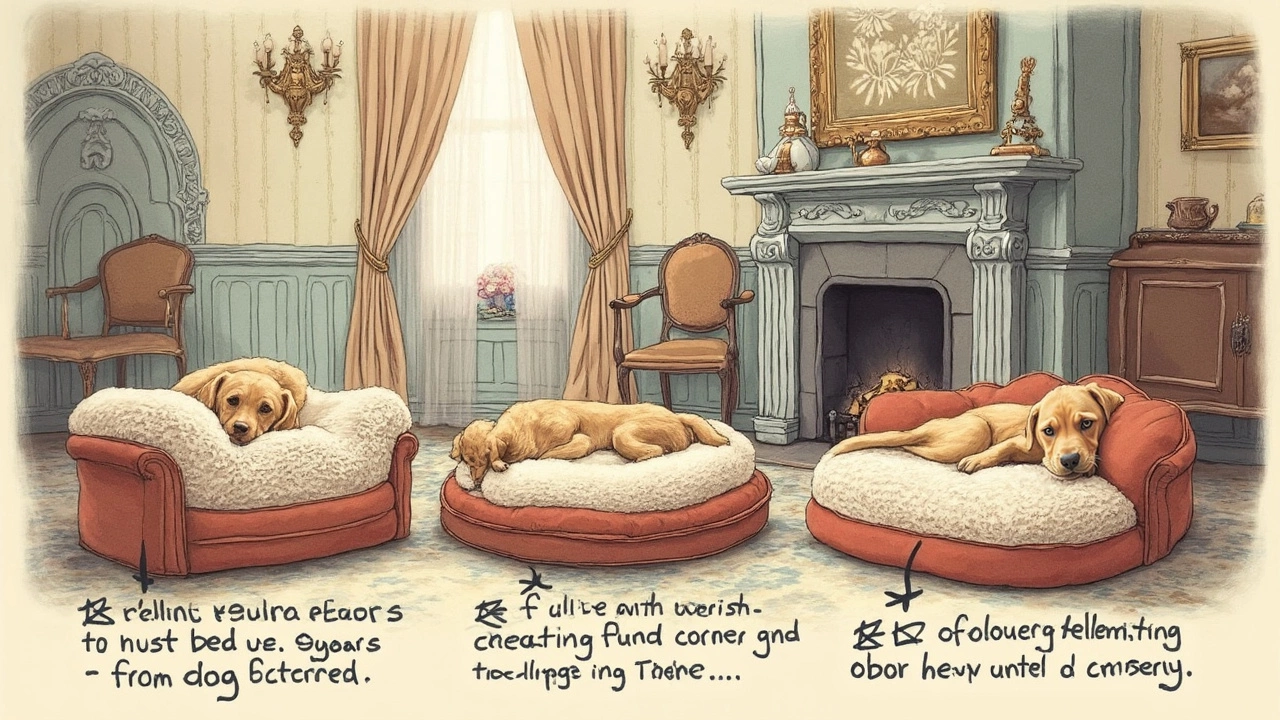
The Role of Odor
You've probably noticed that unmistakable scent surrounding your dog's bed at some point. Over time, even the freshest of beds can develop a lasting doggy smell. But it's not just about the stink. Odor can be a red flag indicating it's time to consider a new dog bed.
As dogs lie on their beds day after day, they leave behind hair, drool, and sweat. All this mingles in the fibers, becoming a breeding ground for bacteria and other microscopic nasties. This bacteria is often the culprit behind those persistent bad smells.
Signs of Trouble
So, when does an odor hint at something more? Here are a few things to nose out for:
- Even after washing, the smell lingers stubbornly.
- Your pup seems uninterested in his bed, possibly avoiding it.
- The bed doesn't dry completely due to too much moisture trapped inside.
Why Odor Matters
A persistent bad smell isn't just a household nuisance. Odor can affect your dog's health. A study showed that continuous exposure to certain bacteria found in old pet beds could lead to allergies and infections in some dogs. The same goes for us human companions, too!
Plus, dogs rely heavily on their sense of smell. If their pet care products or spaces aren't up to snuff, it could cause distress. Imagine sleeping on something that smells bad to you!
Prevention and Solutions
Frequent cleaning can help mitigate odor, but that doesn't fix issues like broken fill or a compromised support structure. Here are some tips:
- Use a removable cover if possible—it's easier to wash regularly.
- Consider vacuuming the bed between washes to control hair and dander.
- If you notice smells right after washing, it might be time for a replacement.
Newer beds are often designed to fend off bacteria with clever materials and designs. Keep an eye out for these features when you decide it's time to replace your dog's bed.
Environmental Considerations
When replacing a dog bed, it's good to think green. Loads of beds end up in landfills, which is hardly ideal for Mother Earth. But, hey, we can make smarter choices!
Recycling and Upcycling
Before tossing the old bed, let's consider recycling or upcycling. Some companies offer recycling programs specifically for pet products, while others accept textiles. If you’re feeling crafty, those materials can be repurposed into something useful, like a cozy blanket or padding.
Choosing Eco-Friendly Materials
Next time you're buying a bed, check out eco-friendly options. Brands now offer beds made from recycled materials or organic fabrics. They're not just good for the planet but tend to be safer for your pooch, too.
Durability Matters
Investing in a durable dog bed means fewer replacements. More durability equals less waste over time. Look for quality materials that withstand your pup's lifestyle, be it digging, drooling, or just jumping around.
What About Donations?
In cases where the bed is still in decent shape but just not right for your dog anymore, donating to local shelters is another way to extend its life. Many shelters are grateful for clean, gently-used items.
Keeping these tips in mind not only helps you with better choices for your pet but also contributes positively to the environment. It’s a win-win!
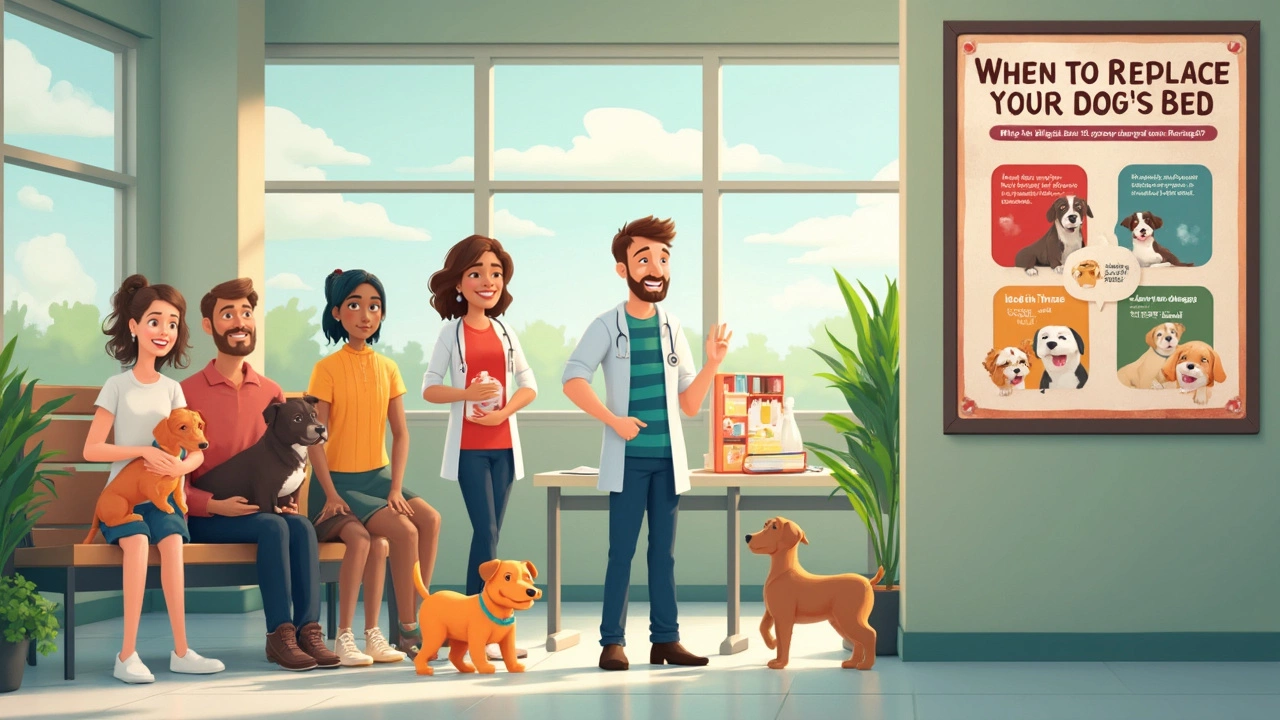
Choosing the Right Replacement
So, it's time for a new dog bed, but where do you start? Today's market is flooded with options, and picking the right bed can feel overwhelming. Let's break it down into manageable steps to make things easier for both you and your furry friend.
Consider Your Dog's Needs
Every dog is different, which means their bed needs are different too. Large breeds, like Great Danes, need beds that support their size and weight, while smaller breeds may benefit from a cozier, enclosed space. Older dogs or those with joint issues can find relief with orthopedic beds that offer extra cushioning and support.
Materials Matter
The right material is essential for both comfort and durability. A bed made of strong, chew-resistant fabric is ideal for aggressive chewers. For those pets prone to accidents, look for materials that are waterproof and easy to clean. Memory foam is excellent for providing support, while microfleece or faux fur can offer warmth and comfort.
Style and Function
From simple cushions to elaborate cushioned caves, the style you choose should match your dog's sleeping habits. Do they like to stretch out? A flat rectangle bed might be best. Do they love to curl up in a ball? A donut bed could be ideal. Also, think about where the bed will be placed—raised beds are great for outdoor use while inside, color and design might matter to you too!
Environmental Impact
Opt for eco-friendly options if you're conscious of your environmental footprint. Some brands offer beds made from recycled materials, which reduce waste and often come with certifications to back up their claims.
Quality Over Cost
Sure, price is a concern, but remember: You get what you pay for. Investing a bit more now in a high-quality dog bed can save you money in the long run by avoiding frequent replacements. Look for beds with robust warranties and positive reviews from other pet owners.
When selecting a new dog bed, these elements help ensure you're giving your pet the best comfort and support. Your dog's happiness and well-being are worth it!
